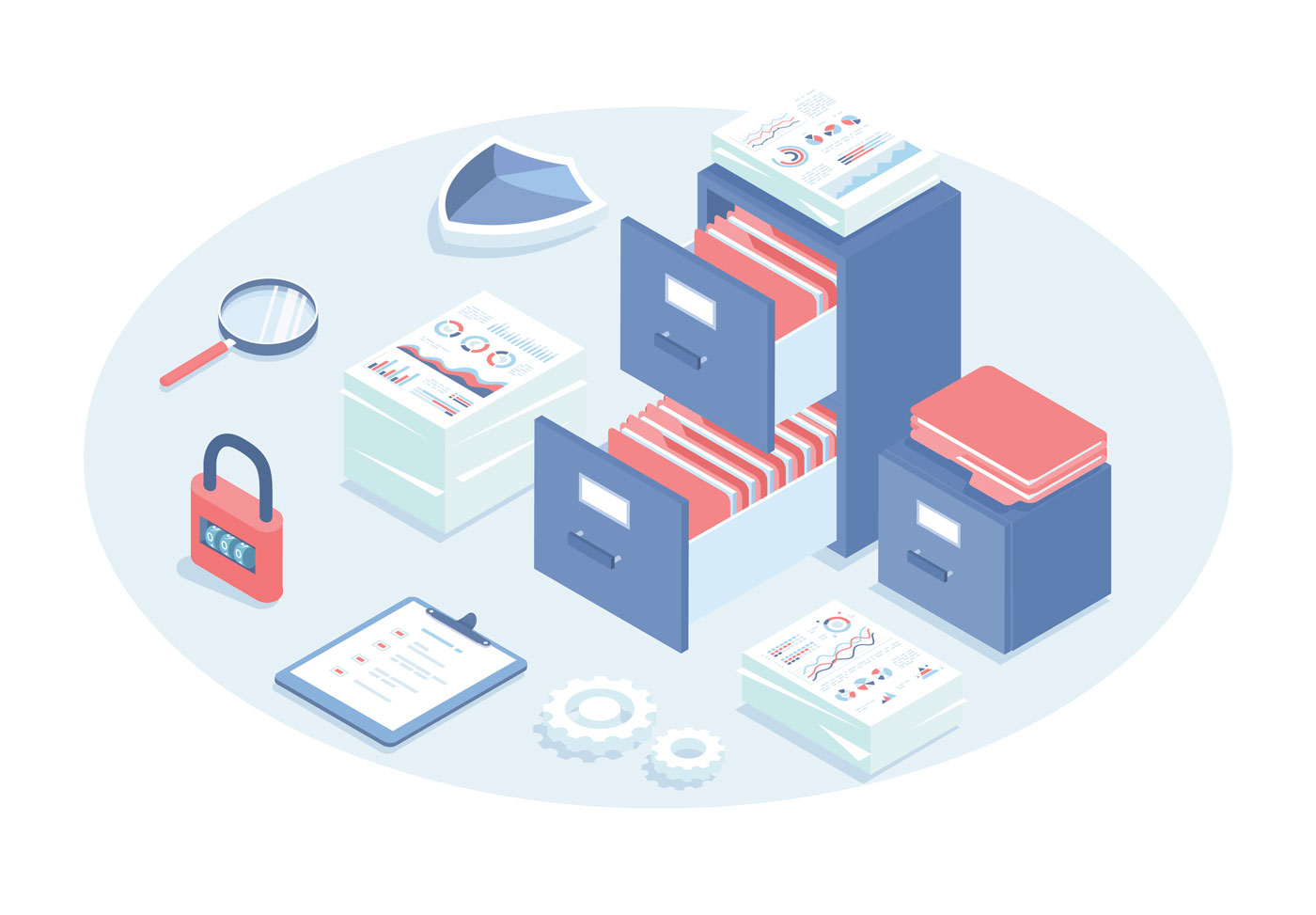FILES RULE THE DIGITAL WORLD.
The contents of a file can be nearly anything from a beautifully designed marketing piece, or business contract, to the logical code of the program you are reading this with.
Regarding business, digital files are the vehicle used to deliver information between internal teams, prospects, customers, and external partners– so why aren’t files at the forefront of most CRM solutions?
Many organizations store their files (contracts, marketing assets, HR docs, taxes, and everything in between) externally in a different system.
External file storage presents added challenges.
Storing files outside the CRM is generally done to reduce cost but also increases the complexity of a team’s file organization.
For example, onboarding new employees presents challenges when HR must download and open each required document and scan for relevant information to complete the onboarding process.
Storing files externally also comes with added security complications, often resulting in access errors, over-access, and various inefficiencies that hinder a team’s ability to perform their job functions successfully.
Reporting across two systems becomes cumbersome and increases the opportunity for error, leaving the savings in storage costs cannibalized by the inefficiency of accessing and sorting through duplicate files across multiple systems.
Users can store files directly within the CRM in Salesforce.
Most Salesforce users and administrators know Salesforce files are buried behind multiple clicks. Searching for them requires a level of savviness that not all teams are equipped with— either a solid naming convention (which isn’t easy to maintain) or a custom solution to surface the files to the users that need them.
Salesforce as a CRM is the backbone and provides the pulse for how a business operates by capturing the activities and results of daily interactions. Salesforce also provides a granularity to a security schema that can ensure that only the correct Salesforce records are accessible to the appropriate user’s roles and personas.
Salesforce sells a 360-degree view of what entities are.
Salesforce allows users to slice and dice information to drive business decisions related to leads or its current customer base, but only if the data exists in the system.
Organizations leverage custom fields to annotate and provide a complete picture of what another Company is and strategies for engaging with it.
The cost to fill out this information isn’t zero, but the benefit of capturing the fields of a record and how the record relates to other records is essential. These relationships are the information used to drive reports and give decision-makers the data required to make strategic moves or buying decisions.
So where do files come in?
They provide information and data that doesn’t usually fit in a field, so having the file related to a record gives the file and record much more depth giving these relationships importance.
Reading a document out of context requires a much higher degree of engagement than having all the other puzzle pieces there for inference. It will not only improve efficiency but can also be reported on and drive more activities for engagement.
Salesforce Files contain data.
When using folder structures, the metadata (or taxonomies) is typically the folder path to the file’s location in the system. The ability for Salesforce Files to have custom fields is often glossed over because the fields are buried multiple clicks away from the file record itself.
Salesforce files can store much more than the file’s name. For instance, a Salesforce administrator can add a multi-select picklist to the Content Version object, providing all of the files already stored in Salesforce much more context and increasing discoverability to all users with access to the Salesforce file.
When enough additional context is added to files, users do not have to click to open and view every file to see the one thing they are looking for. Salesforce users can use this additional context and their business insights to more intuitively find the information within files quickly while staying on platform where security risks are much less, and efficiency is much greater.
You can do much more than that with Salesforce Files.
Enter FirmWorks Files, a native Salesforce app by FirmWorks.
FirmWorks Files allows users to do much more than view the contents of a file directly on a record layout within Salesforce. The app aims to make Salesforce files a top-level object within Salesforce itself.
FirmWorks Files can search and filter for virtually any information a file contains.
FirmWorks Files enables Salesforce users by doing away with the stale semantic storage of a network folder structure, giving users a way to search and filter files based on virtually any information within the file— such as the text in a file, any custom field added to the Content Version object, and more.
FirmWorks Files can generate public links to share internally and externally.
FirmWorks Files also provides streamlined processes to share files with your organization’s external partners.
Sending attachments in an email has many limitations, including size limits, a lack of tracking, the ability to redact the file or update its contents without resending, and more. Salesforce Files support public links, which enable users to send a direct link to a file. Public links allow access to much larger files, update the file after the link is sent, destroy the link and render the file inaccessible, and even password protecting and expire it after a set time.
FirmWorks Files can automate reports.
As of early 2023, Salesforce does not allow the creation of reports on Content Version and its custom fields— but FirmWorks Files does.
FirmWorks Files’ reporting capabilities drive compliance by auditing the relationships between files and their associated records.
For instance, an Information Security officer would want to know which accounts had an opportunity that closed last quarter and which of those do not have a signed contract stored against the account record. The ability to do audit reporting allows an organization to understand its legal risk and use this information to drive actions to appropriate parties.
Similarly, a Human Resources team member could see which employees’ certifications expire soon and have a flow creating a task to remind them to renew their certifications.
With the right file management tool in place, your organization can understand and mitigate risks related to contracts and documents, compliance, and more.
Compliance and auditing functionality is the first step to driving the behavioral changes required to reduce and mitigate the associated risks. There is something to be said about proactively letting an employee see that a signed NDA isn’t on record before they engage with a prospect.
So Why FirmWorks Files?
Your CRM system is only as good as the information it contains.
Having the ability to find documents quickly, send links, and easily view and adjust the correct version of the information is essential. And the capacity to run reports regularly to determine if operational files exist (or don’t exist) is vital, too!
The Salesforce record with its related files in the CRM gives the ability to drive more activities and behaviors and paints a much better picture of what a record and relationship mean to an organization.
Give your organization the ability to find, view, report, and work with files in a single contextual place.
Ready to see how FirmWorks Files can impact your organization? Contact us at sales@getfirmworks.com




